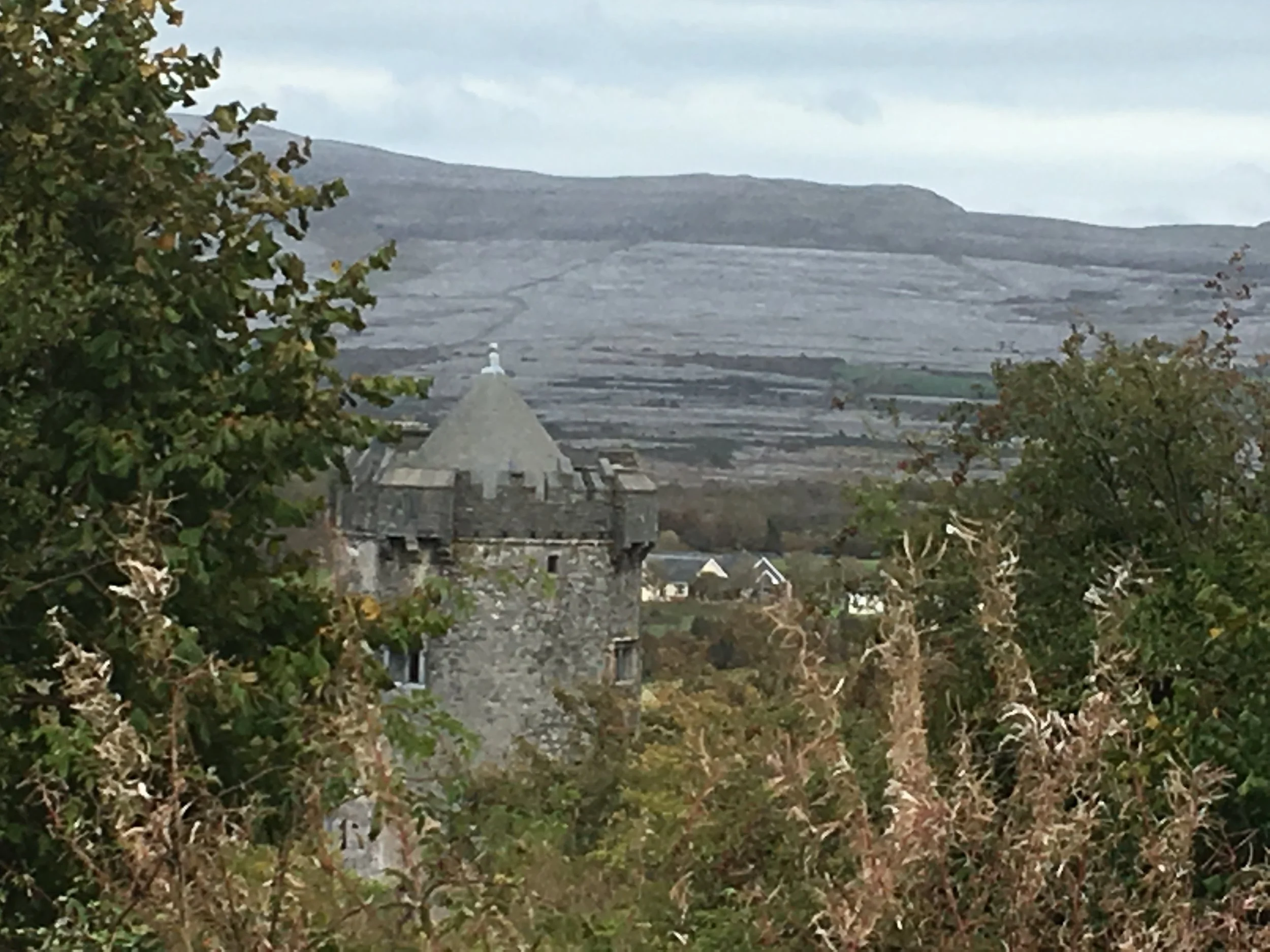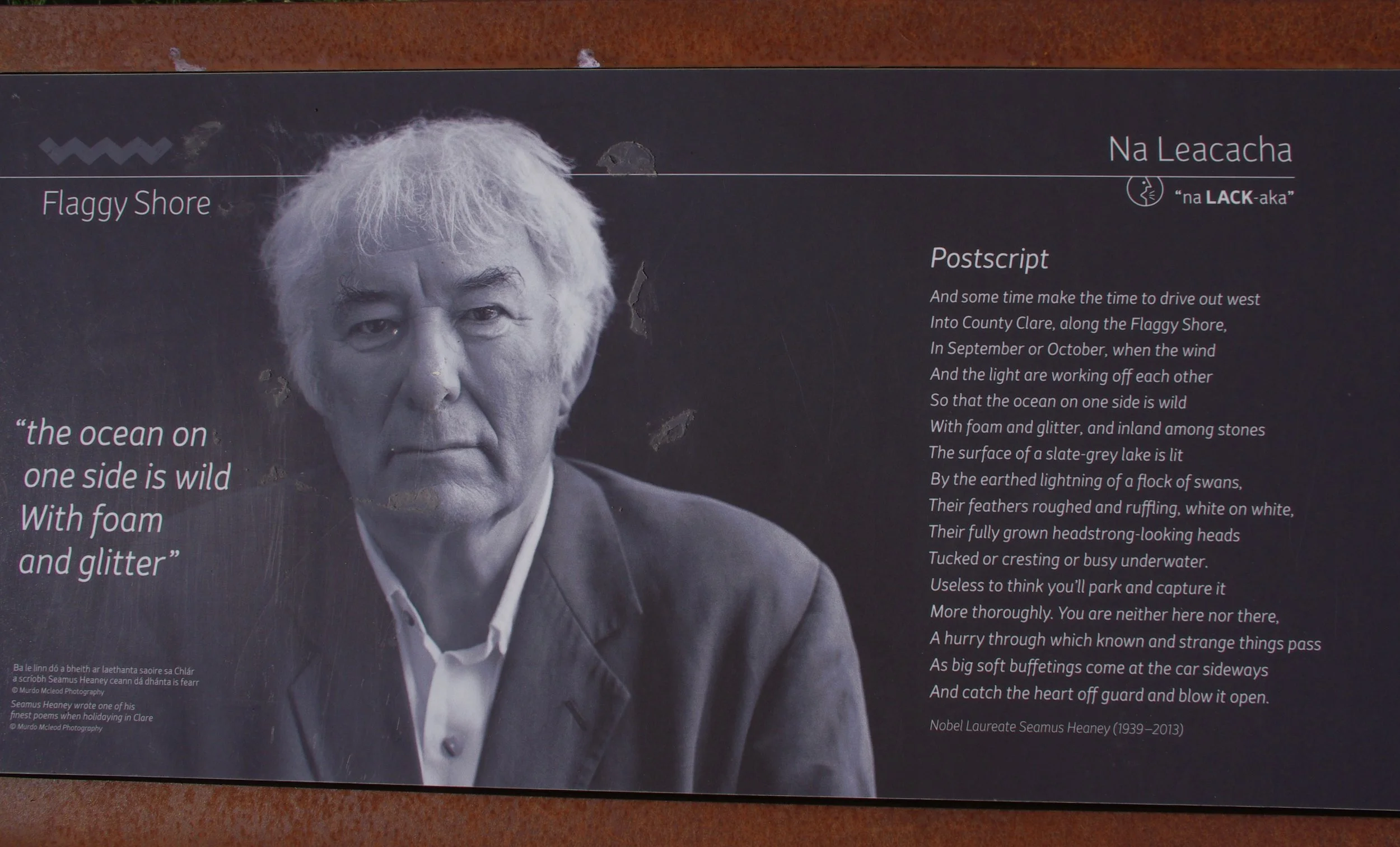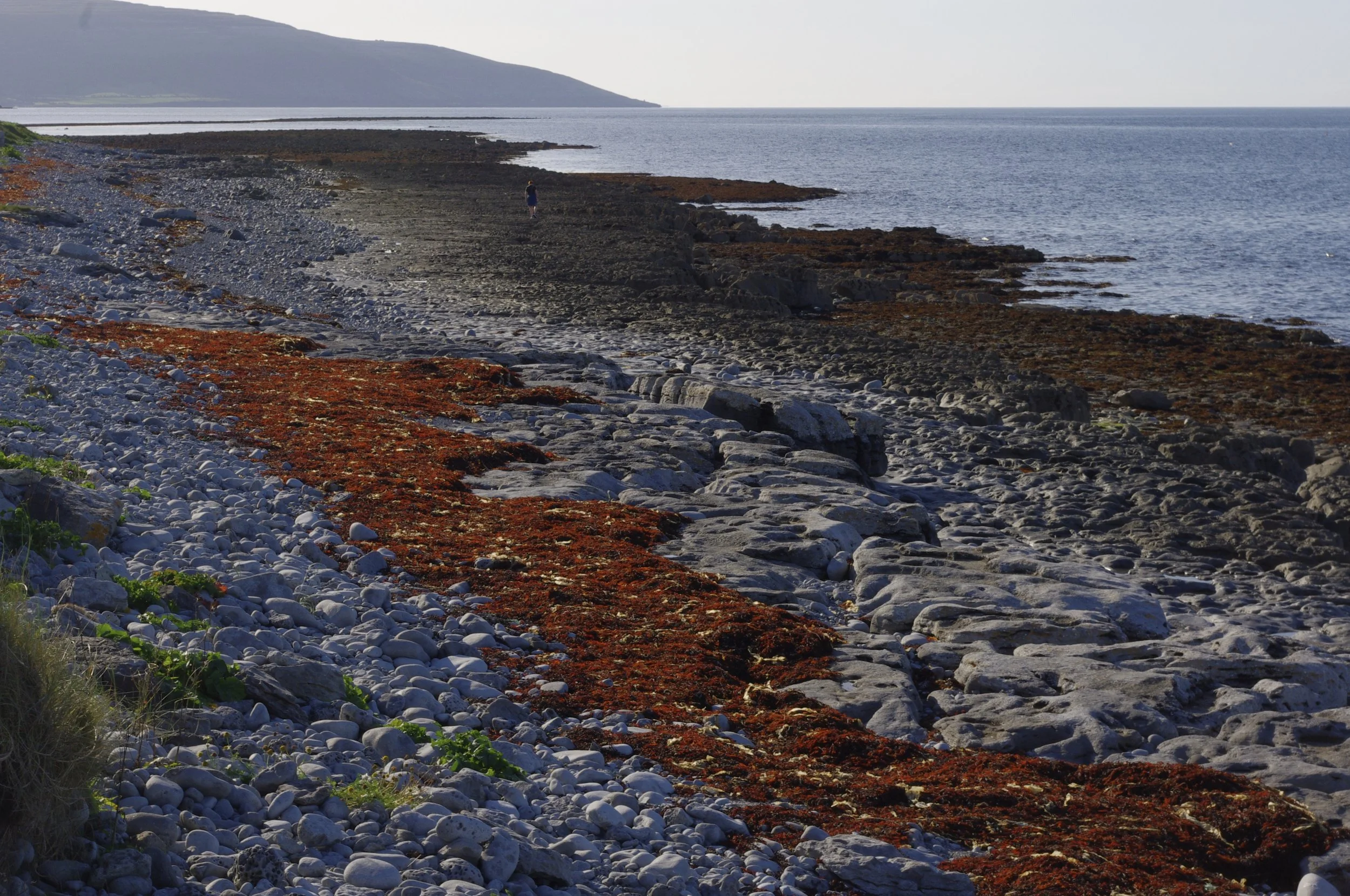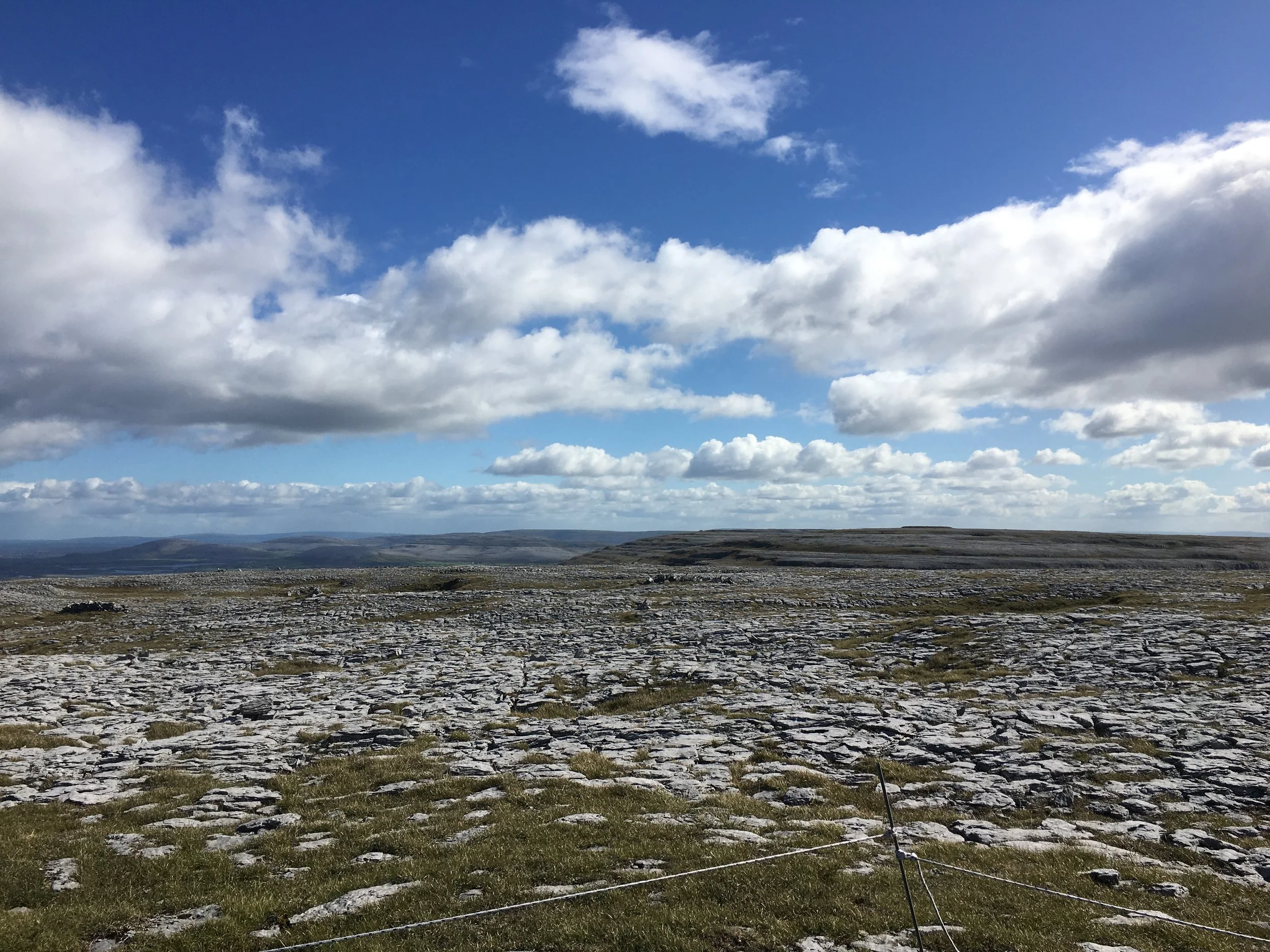A few days ago I visited the Flaggy Shore with another artist-in-residence, Peter, a sculptor from Ohio. At the start of the Flaggy Shore road is an interpretation board with a large image of Irish poet Seamus Heaney alongside his poem Postscript:
And some time make the time to drive out west
Into County Clare, along the Flaggy Shore,
In September or October, when the wind
And the light are working off each other
So that the ocean on one side is wild
With foam and glitter, and inland among stones
The surface of a slate-grey lake is lit
By the earthed lightening of a flock of swans,
Their feathers roughed and ruffling, white on white,
Their fully-grown headstrong-looking heads
Tucked or cresting or busy underwater.
Useless to think you'll park or capture it
More thoroughly. You are neither here nor there,
A hurry through which known and strange things pass
As big soft buffetings come at the car sideways
And catch the heart off guard and blow it open.
The poem catches my heart off guard before I have a chance walk the Flaggy Shore. But its shimmer and immediacy has been popularised for spectators. I’d heard this poem read aloud at an Irish education symposium the previous week. Then it had seemed so necessary and appropriate to the “presencing” praxis and ethics we were all experiencing while interrogating ideas for creative transformation in the school system and connecting with each other on matters of the imagination. I walked along the Flaggy Shore with Peter, after coffee and tapas at the café, unsure of what a flaggy shore should signify, intrigued that this strip of unremarkable coastline has grasped tourists’ urgency of attendance. It was a weekday but there were many viewers on the narrow road. Oh the voyeurism of tourism and its discontents. Has the commodification of Heaney’s poem added to making this site/sight so magnetic? It’s as if we are being asked, and increasingly, to view a series of bodies along a long line of preordained topographies. But what is between, off the track, quiet, or roaring underneath? How do we open our minds (and hearts) yet stay on track without distraction?
We met two women, coming from their daily swim, who told us to avoid the area on weekends because the traffic is pressing walkers to the wall, literally. Last Sunday a car hit a child’s stroller and the driver, angry at being slowed down by walkers with children in strollers, then provoked an altercation with the parent who was understandably very reactive and distressed. Fortunately the child had been removed from the stroller just before the incident. The women told us they are part of a campaign to reduce the flow of traffic along the road and have been removing “Atlantic Way” tourist signs that point to the Flaggy Shore. Ah the activists! They blow my mind.
It was a day for shocks. One of the women, when she heard Peter’s American accent said: “I love Trump!” And then she turned to me smiling and said, in her Dublin brogue, something like: “Don’t you just think he’s such a fine hunk of a man?!” In that moment I realised how much my political views are reinforced by my associations with those who hold values similar to mine. This was a moment for coming out: about how much I hate Trump and all he stands for, and how the language he uses is so toxic that I now stanch it before it putrifies my skin, and that I find his arrogant capitalist dissembling puny and bileous. Our conversation was rescued, from catastrophe, with humour, and so we admired Zinny the 17 year-old Jack Russell perched like a queen in the bike basket.
I watch the tourists walking along the Flaggy Shore road, intent on reaching the next café at the other end. The beach is famous for fossils. A young lad dances along the beach, stops to look at rocks before running to catch up with his family. We pause to take photographs of the gradations in rocks, kelp, grasses, cows’ coats, sea and sky: artists forever thirsty for beauty, colour, change. I’ve come here as a tourist too, not because of Heaney’s poem but because I’ve been seduced by publicity, the blot on the map, the magnet to funnel into “same”. What would Heaney (or another poet) write, about this phenomenon? What would blow a poet’s heart open at this smirching of the extraordinary in the ordinary? I think of the coastline of the Tarkine/takayna on the west coast of Tasmania, of the middens desecrated by vehicles, and it resonates like a clanging. It’s the voyeur in the landscape: a common denominator view minus appreciation (and protection) of what’s really there (past, present and future).
Last weekend I walked the Burren uplands with some keen Irish walkers in glorious weather. How many times did I hear “What a Beautiful Day for It”!? (Since then it has rained most days). The leader was a Clare farmer whose like-the-back-of-his-hand-knowledge left me in no doubt he knew where he was taking us: up and over Gleninagh Mountain to Black Head and back to Ballyvaughan, mostly off tracks. I felt like I was measuring every step to keep the tail-end alive and return with normal ankles. Our only stop was a fifteen-minute lunch break, on the top of the mountain, in a chilling wind overlooking Galway Bay, with Black Head - the Burren coast promontory - a long way below us. We pushed fast up steep slopes to criss-cross the uplands, step over the grikes (holes in the karst limestone), teter on the loose clints (pavement blocks) and thump down the pitted slopes of grass like the goats that live up there. This was walking with serious intent: to finish. Did I mention that some of these walkers were training for the Himalayas? I didn’t find that out before setting off.
Last week at the symposium I had the pleasure of meeting and listening to Martin Hayes, virtuoso Irish fiddler from the band The Gloaming and other bands. He was the special guest, to synthesise our discussions into poetic and musical form and he did that like a laureate. I had the pleasure, at a “session” of playing along with him and a local harpist in a couple of tunes. I felt as if I was swimming in one of those rare moments of bliss. It’s difficult to listen to other Irish fiddlers now after hearing his intuitive response to the moment and his tenderness for every note. Last night at one of the local hotels two fiddlers played reels and jigs in unison for several hours, like wallpaper. Where was the phrasing, nuance, space between notes, expressiveness and communication? I admired their capacity for endurance and memory but couldn’t stay long in the room to listen or think of joining in.
As US pianist Thomas Bartlett, says (quoted on Hayes’ website): “I remember the first time I heard Martin play, and there was something that happened to my body that I hadn't experienced before, where I felt like my heart would expand and contract with the way he was playing." Blow it open!
https://soundcloud.com/the-gloaming-official/the-girl-who-broke-my-heart-1
Newton Castle and looking east, Ballyvaughan
Seamus Heaney at the Flaggy Shore
The Flaggy Shore looking towards Ballyvaughan and Gleninagh Mountain
Looking east from Gleninagh Mountain, the Burren, County Clare.



